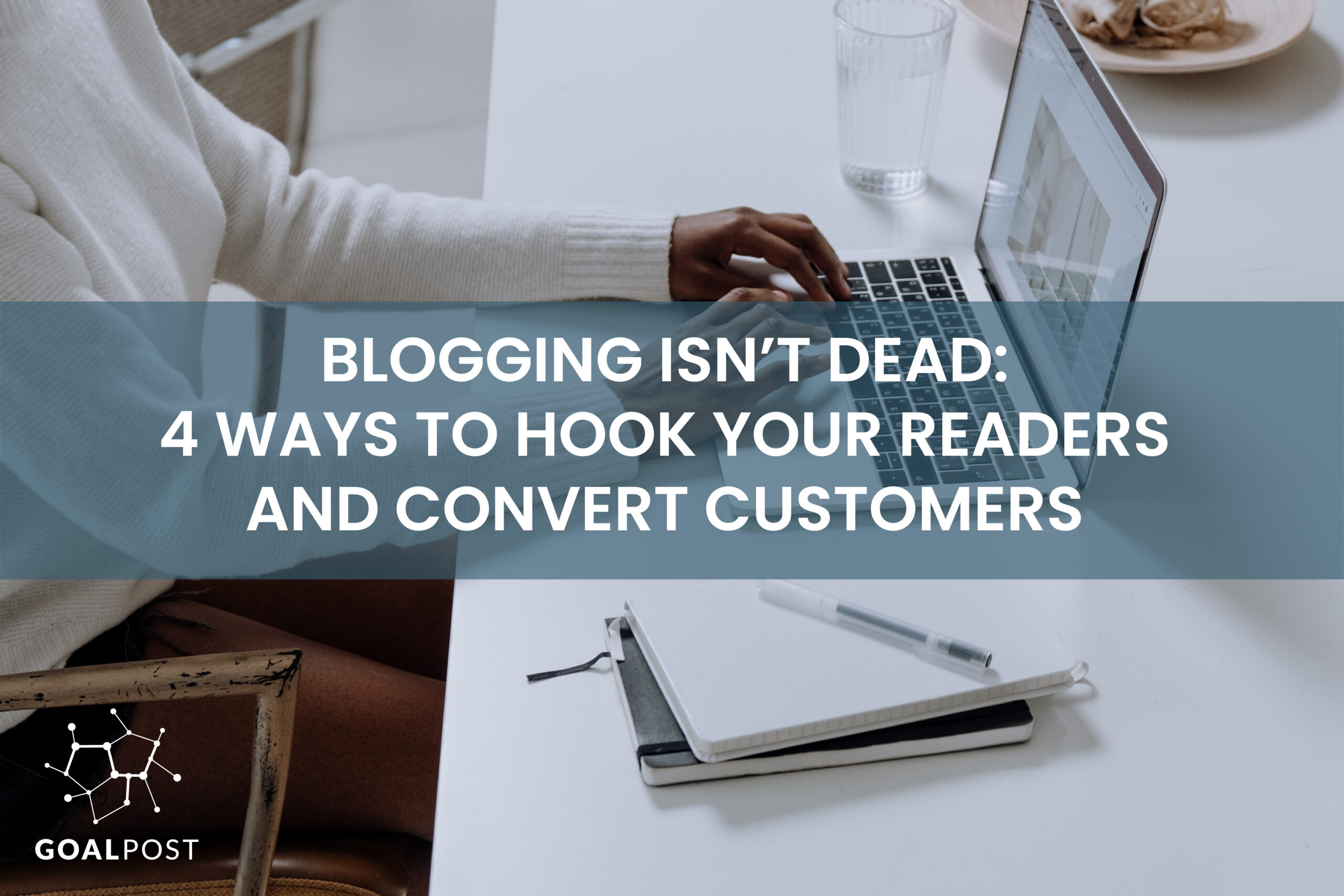Blogging… that Sounds Painful
If there is one marketing word that has the power to evoke a spectrum of emotions, it’s the word “blog.”
Far from being an outdated form of B2C communication, blogging remains one of the most effective ways to measure site traffic, promote products and services, and build a rapport with your target audience.
What’s more, blogs demonstrate subject authority. It’s also an excellent way to drive traffic to your site through the strategic use of keywords.
Whether you are looking to create long-form pillar content to boost website SEO or dole out a weekly series of bite-sized blogs, this article will show you how to zero in on the winning tactics to getting your blog off the ground.
1. Choose the correct length, tone, and subject matter.
Experts have long argued over the ideal blog length. Is it better to have thousands of words of content to establish authority? Or is a shorter version that readers can scan more beneficial?
In reality, the length of a blog is far less important than the quality of its content.
In order to rank in Google search, a blog should be a minimum of 300 words. Standard blogs range anywhere from 500 – 1,000 words. Longer blogs (also known as ‘pillar content’) run up to 10,000 words. Depending on the meatiness of your subject, your word count may be more or less.
Once you’ve decided on a word count and subject, establish the tone. Are you writing to inform your audience about new products? Are you writing to instruct them on product usage? Playful or serious, don’t write just for the sake of writing. Find a theme and carry it from start to finish. Most importantly, always end with a CTA (call to action). You want your CTA to guide customers to the next step of their buying journey.
2. Answer your customer’s burning questions.
You can get an idea of what your customers want to know from you by reading reviews, conducting follow-up email surveys, or gathering data from customer service relations. Use this to assemble blogs that speak directly to your customer’s most burning questions.
A great blog might sound something like, “Everything You Need to Know About Using an Air Fryer” or “Your Top 10 Questions About Paddle Boarding, Answered.” The next time your ideal customer is browsing the web for answers to their industry-related conundrums, they’ll find your blog and come to view you as the authority.
Bonus: customer service representatives can point customers to your blog in reference to common product questions.
3. Invite experts to take the floor.
Every good business person knows that they don’t know it all. Blogging is a great way to invite other subject matter experts to collaborate with you to increase your perceived industry authority. Additionally, you can introduce your customers to trusted, familiar faces that they’ll associate with your brand.
If you’ve never made a connection with an industry expert before, don’t stress. A simple introductory email will do the trick, along with a brief description of what you’re looking for them to create. Remember to do some light research before emailing in order to have a general idea of the person’s field of expertise, and then pitch a blog subject that’s in their wheelhouse.
In the end, you’ll both benefit: your business will have a well written, authoritative blog, and your subject matter expert will have a piece of published work to show off.
4. Drive customers to your product page.
While you don’t want to make every blog a product pitch, finding ways to weave your products and services into blogs is relatively easy.
The quickest way to pepper your blogs with timely links and product suggestions is to establish a theme and title that easily ties in with your current product offerings. For example, a blog titled “10 Ways to Prevent Falls in the Home” for a Medical Supply Company would be a great way to guide customers towards anti-fall devices such as walkers, bathroom grips, anti-slip carpets, and bed rails.
Ask yourself, “What are my audience’s most dire concerns?” and work backwards from there. If you can ask a question and position yourself as the answer, you’ve already done the work of promoting your business while establishing trust and authority with your customers.
Watch on YouTube.
At Goalpost Group, we help our clients break the cycle of bad marketing using strategy, structure, and killer content that drives sales and wins the day. Get in touch with a member of our team to learn more about how we can help transform your marketing.





